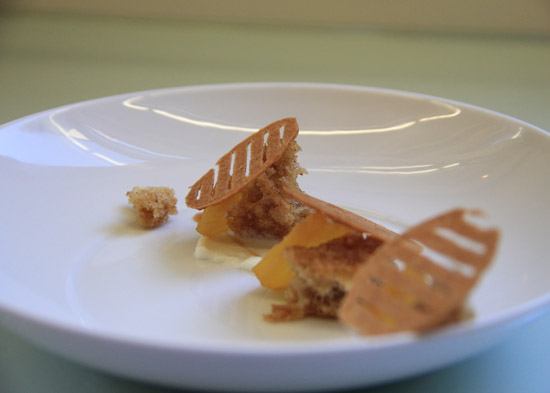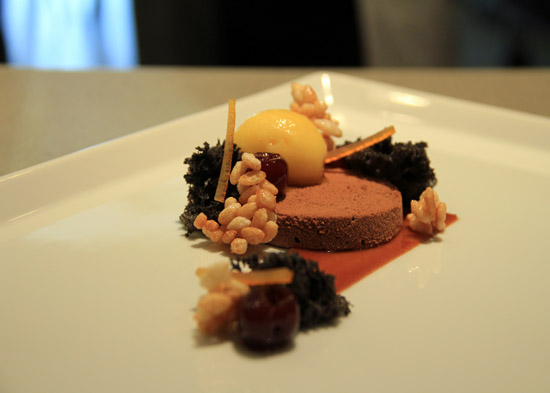I had the honor last week of conducting an intensive, three-day course on the upper floors at ICE, the latest in a long-running series known as the Center for Advanced Pastry Studies.

The program - CAPS, for short - was initiated several years ago by pastry and baking instructor Michelle Tampakis, and the long list of illustrious pastry chefs who have brought their expertise to ICE in the past includes heavy hitters like Olivier Bajard, Laurent Branlard, Stephane Glacier, En-Ming Hsu, Michael Joy, Elisa Strauss, and Stephane Treand. The CAPS program has become a unique and valuable resource not just for our students, faculty, and alumni, but for the greater community of New York City pastry chefs.
As special guest instructors, the invited chefs are able to focus in on their respective specialties - cakes, candies, sugar, chocolate, plated desserts - over the span of some twenty hours of hands-on instruction to a small group of working pastry chefs. Funny thing, Chef Tampakis invited me to create a class nearly a year ago, long before I ever knew that I would join the ICE staff as Creative Director. Though I have taught similar classes elsewhere around the country, it felt great to share my tips and techniques on my new ‘home turf.’
The theme for my course centered on contemporary plated desserts, and we jumped right into things on the first day with two pre-desserts - smaller, lighter courses that typically precede more complex sweets. Beginning with a yogurt pannacotta, the students were exposed to hydrocolloids and the bright but intense flavor combination of basil, rhubarb, and fig. Next, I sought to rethink a classic pastry preparation - pate à choux - by incorporating a layer of crunchy sablée, elderflower mousseline, and a liquid-center sphere of apricot. I demonstrated each component and presented the final plating just before our lunch break, and in the afternoon I let the students loose to prepare the recipes on their own.
The flavors were amplified on the second day with desserts that introduced combinations both novel and familiar. Spiced parsnip cake (think carrot cake, but earthier) was paired with slow-roasted pineapple and a light goat cheese cream. None of the students had ever worked parsnip into dessert, so I briefly deviated from syllabus to demonstrate its versatility by whipping up parsnip noodles and a freestanding crème brulée set with agar. Apple and cinnamon were next, in the form of oven-baked apple confit and cinnamon caramel parfait, accented by red wine caramel and a thin crunchy crèpe dentelle.

With the third and final day came chocolate. In a dessert inspired by a visit to the cocoa plantations of the Dominican Republic, I paired a dense dark chocolate cremeux with coconut sorbet, lime meringue, and caviar-like pearls of mango. Conventional gianduja - the Italian delicacy combining chocolate and roasted hazelnut - was reimagined with black sesame paste and lightened into a mousse. This second dessert also featured a black sesame sponge cake that is ‘baked’ in a microwave, in addition to crunchy caramelized rice and mandarin sorbet. With some time to spare, I was able to share a few modernist petit fours utilizing peanut butter powder, a citrus fluid gel, and roasted white chocolate.
I love teaching in this kind of format and being able to spend that little extra time on subjects like structure and composition of ingredients, or the methods pastry chefs use to formulate ice creams and sorbets. And because the students themselves are working in their own real-world environments, I like to emphasize how these techniques can easily be applied into any kitchen. And best of all, being immersed in pastry for three days creates an exchange of information and an ongoing dialog that doesn’t end when the class is finished. I can’t wait for the next CAPS session in November when Jerome Landrieu from the Barry-Callebaut Chocolate Academy in Chicago will visit ICE to share his unique vision of chocolate.

